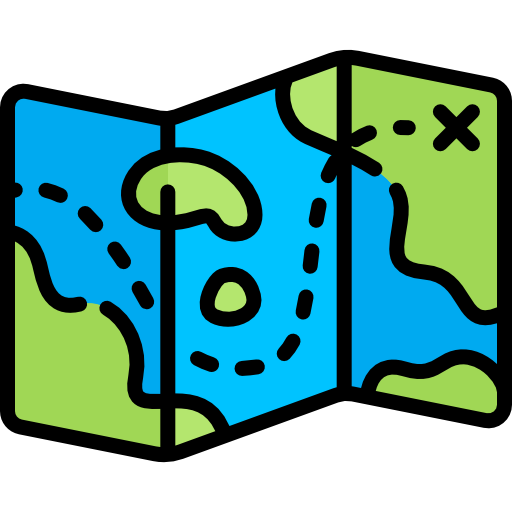Bali Pass Trek
21000 / Per Person

Altitude :
4953 mtr.

Duration:
8 Days

Trek Length
67km

Base Camp:
Sankri

Trek Difficulty :
Easy to Mod.

Altitude :
4953mtr

Duration:
8 Days

Trek Length
67km

Base Camp:
Sankari

Trek Difficulty :
Easy to Mod.
Overview
The altitude at which the Bali Pass Trek is located is 4953 metres. The trek across the Bali Pass begins in Sankri Base Camp, which is the starting point for more than twenty-five different treks in the state of Uttarakhand, and ends at Yamunotri Jankichatti on the Yamunotri Trek. The trek across Bali Pass is part of the Govind Wildlife Sanctuary National Park, which is located in the Uttarkashi district of Uttarakhand. Without a shadow of a doubt, the Himalayas are blessed with bewitching beauty, a bracing temperature, and a desired, calming, and verdant meadow. What could possibly be more pleasant than coming here to enjoy the peace and quiet for a few days? The unique aspect of it is that you may also undertake this trip in conjunction with the Harkidoon trek, which requires you to have 8 nights and 9 days from Dehradun to Dehradun in order to complete it. involves transport. Most significantly, the hike is a challenging one, and it is not recommended for novice hikers. This is because the path is thrilling, and it entails traversing dangerous sections and high ascents. As a result, the hike is not without its difficulties, but it is fantastic for those who are looking for an adventure and are experienced hikers. The Himalayas are renowned for their breathtaking panoramas, in addition to their natural splendour and allure. Because of this, the Bali Pass hike in Uttarakhand is a fantastic example of an eccentric crossover adventure.
Itinerary
Day 1: Drive from Dehradun to Sankri
Distance: 180Kms
Time: 6-7hrs
The first place you will stay before beginning your hike across the Bali Pass is Sankri. Within the boundaries of the Govind Wildlife Sanctuary in Uttarkashi is where you’ll find this quaint little settlement. While travelling from Dehradun to Sankri, you will go through a number of beautiful areas. waterfalls in Kempty, as well as Nainbagh, Mussoorie, and other places. It is encircled by the summits of Swargrohini as well as other Greater Himalayan peaks. Incredible vistas are created when the sun sets over Sankri and the surrounding area. Your journey may get off to an excellent start by beginning in this manner. There are a variety of motels and home stays available in this area.
Day2: From Sankri to Seema via Taluka
Distance: 12Kms trek
Time: 8 hours approx
Get some early sleep so that you can go for Taluka first thing in the morning. From here, our hiking adventure will get underway. In order to access the 12-kilometer-long road, you will have to traverse many significant streams as well as bamboo and deodar trees. It is a wonderful experience to go around a number of mountain curves. It is possible to camp close to the Forest Rest House, and in certain circumstances, trekkers do so there as well. Following a stone-way that leads down to the river bed is the best way to start your hike after leaving Taluka. The trail continues in the direction of the Supin river beyond this point. After travelling through a few bridges made of cement and wood, the trail begins to wind its way progressively upward. After almost an hour, the way will become accessible to the left. The majority of the local population is occupied with their work in this area. They are thrilled to meet you and speak with you. If you keep trekking for another two hours, you will come across some amazing wooden structures that have not yet been found. This is the settlement of Ghangad. To reach the dhaba or the water-powered mill will take a further twenty minutes. Keep going on for one more hour to reach another campground that is now being development. A wooden bridge will lead you to Osla village. Osla is a highly well-known tourist attraction due to the town’s distinctive wooden architecture. You will reach Seema after continuing to walk for another hour adjacent to the Supin river while surrounded by forest cover. If you keep your eyes open while you’re in the jungle, you may be able to see a Himalayan monal. There are a lot of trekkers at the Seema camping area, despite the fact that it is a camping area. You can unwind after a night spent sleeping in tents and enjoying the outdoors.
Day3: From Seema to Rainbasera
Distance: 9-10Kms
Time: 7hrs approx
You have to begin completely from beginning if you want to go to Debshu Bugyal, which is our first significant location. To begin, take a stroll along the Supin river. As you approach Debshu Bugyal on today’s hike, the ascent will become more challenging. Once you have arrived in Ruinsara Valley, you will see that the path is littered with boulders. Continue rising to get a view of the famed hamlet of Oslo that is behind you. Just keep going for another half an hour, and Debshu Bugyal will be at this location. As the Bugyal is a vast 2 kilometre long pastureland, this is an ideal location for a rest stop. It is possible to view the meadows to the north and to the west of Kala Nag. After this point, the trail descends precipitously until it reaches the river bottom. It is difficult to navigate because to the presence of stones. Another bridge will need to be crossed here. Take in the breathtaking scenery that surrounds you. From where you are, the path begins its hard ascent. The next camping spot, which is owned by Rainbasera, only has one modest cabin. The rushing water of the river in the evening is a breathtaking sight to see. During this tranquil pause, hikers often sit right near to the stones in the river bed. Tents are a wonderful choice for shelter.
Day4: From Rainbasera to Ruinsara Tal
Distance: 7Kms
Time: 5hrs approx
This is a really exciting day since our next camping spot is going to be at Ruinsara Lake. It is going to be very much like the path that you travelled yesterday. Carry on travelling for another three to four hours, and you will eventually reach the body of water. The lake may be reached by wading through streams, strolling, or engaging in a variety of other exciting activities. A camping trip would be a dream come true right now. It is situated in the region between Lake Ruinsara and the Supin river, and it is encircled by grassy plains that are sprinkled with enormous snow-capped mountains. The breathtaking mountains of the Bandarpoonch range, including Kala Nag, Bandarpoonch, and Dhumdhar Khai, dominate the skyline. A temple may also be found at this location. You may easily explore the surrounding region on foot while taking in the sights.
Day5: From Ruinsara Tal to Odari
Distance: 4Kms
Time: 4hrs approx
The distance you cover on your stroll today is merely 4 kilometres. It moves downward in the direction of the Supin river. You will go through several woods and cross some rivers along the way. Before arriving to the subsequent meadow, the trail must first ascend once again. From the meadows, one may get a good view of the higher peaks. This is a recap of the events that have occurred over the last several days for you to look back on. Surprisingly, the amount of greenery will decrease in the years to come. The distance to Odari is less than one kilometre. There is a rock cave next to the campground. The name Odari comes from the word for cave in Japanese. It is claimed that Bali, Lord Krishna’s brother, made his residence in this cave during his lifetime. Additionally, Swargrohini 1 and 2 may be distinguished from this cave’s vantage point. After lunch, your Trek Leader will lead you in some training activities that will be of assistance to you as you continue to ascend.
Day6: From Odari to Bali Col Camp
Distance: 5Kms
Time: 7hrs approx
It may seem like a shorter day, but getting everything done will be challenging. It will be a strenuous ascent along a slope that is slanted at a sixty degree angle. This section of the hike is along a ridge and has loose rocks and scree. In addition to this, there are stones strewn over the path, which makes it much more challenging. You need to make sure you receive adequate drink and rest. You should take the required measures in order to prevent major issues that might result from height increase. During the night, the temperature will often fall below 0 degrees. Get ready for the chilly weather. After a hard day, you may retire to the comfort of a tent.
Day7: From Bali Col Camp to Lower Dhamni via Bali Pass
This day might be regarded as the pinnacle of the journey. In order to go to Lower Dhamni today, you are going to have to travel over the Bali Pass. You are going to need to consume enough food to sustain you throughout the day. The route up to Bali Pass is treacherous since it is steep and coated with snow. Keep to the path that has been indicated by your guides. You won’t need to rope up, but in case of an emergency, you can put on some microspikes. After a strenuous ascent that lasts between two and three hours, one finally arrives at the pass’s peak. Only 10 feet broad by 30 feet wide is all that is available. At this highest point, you will get the impression that you are standing on the summit of a mountain. Take in the breathtaking scenery of the Swargarohini and Banderpooch peaks, which can be seen in every direction. It is possible to make out the Yamnotri Valley to the right. Take some time to appreciate the scene and the present moment. Keep your eyes open for the ride down, since here is when the real excitement starts. Following a tight trail, you will descend at an angle that is nearly exactly 90 degrees. Follow your advice and utilise suitable tactics. Take extreme caution as you make your way up from the lower Dhamni to the higher Dhamni on this treacherous trail. Because of the snow, it can prove to be challenging for you. After completing this challenging section, stop for some rest in Upper Dhamni. The route from leg to Dhamni is going to be quite complex for you. Keep to the instructions of your guide, and do your best to stay with the group. Following a little period of recuperation, we shall set off on our journey to Lower Dhamni. Due to the potentially complex nature of the journey, it is strongly advised that you remain with your leader and squad throughout. After this point, the path will level off and become more obvious to follow. It travels through the woods for close to two kilometres. You may relax in your tents. You will have the opportunity to remain there for a significant amount of time.
Day8: From Lower Dhamni to Jaan Ki Chatti and then Drive to Dehradun
Distance: 8Kms
Time: 5hrs approx
The journey’s last day has finally arrived. This day is going to be the simplest of the trip since there will be a lot more descents than ascents. It is a route that has been paved with cement. Additional one to two hours are required to ascend to Yamunotri. You should get an early start from your campground and go to Dehradun.
Inclusion
- 8 days premium trek
- Double sharing basis of tents through the trek.
- Dehradun to Sankri & Return Transport in Tempo/Bolero/Sumo Vehicle
- All meals – vegetarian
- Campfire at Camps (If Available)
- Trekking permits and forest camping charges
- Trekking equipment (Tents, sleeping bags, ice axes, ropes, etc.)
- Expert trek leader (qualified in basic/advanced mountaineering courses)
- Services by Expert Team (guides, cooks, helpers)
- Safety equipments (first aid, medical kit, etc.)
- Achievement Certificate
- Memories of Life Time
Exclusion
- Pickup from your place
- Luggage carries charges
- Food during travel
- Any kind of personal expenses
Fitness
As you climb to higher altitudes, the air grows thinner and less oxygen is present. The amount of oxygen in our blood is equivalent to the proportion of haemoglobin that is saturated with oxygen. At altitudes above around 2,100 metres (7,000 feet), the amount of oxygen carried by our blood starts to decrease. At the same time, the human body possesses both immediate and long-term adaptations to altitude that help it somewhat compensate for the shortage of oxygen.
A Great First Trek for Anyone Who Wants to Get Into Hiking:
- The Bali Pass trek is an Easy to Moderate level trek in terms of fitness requirements. The track is well-marked and has only modest inclines and declines. Water fountains may be seen at various points throughout the path. However, it’s still best to be ready if you’re planning your first major Himalayan trekking adventure. Here is a plan for getting in shape for the trip.
- Our hikes are typically designed such that you cover around 9 kilometres in six hours, however this might vary somewhat depending on the terrain. It’s about the same as walking 6 kilometres an hour over the plains, therefore the speed is around 1.5 kilometres per hour.
- Following this plan, you may train yourself to run 3 kilometres in 30 minutes. Always begin your workout routine with some light stretching and warm-up moves.
- Follow this training schedule for trekking fitness required:
- Week 1: Walk for 10 minutes at a fast pace, jog for 10, and finish with a slow stroll for 10 minutes.
- Week 2: 15 minutes of jogging, followed by a 5-minute brisk walk. A leisurely stroll that takes no more than 5 minutes
- Week 3: Walk briskly for five minutes. Jogging for 15 minutes A brisk stroll that takes no more than 5 minutes
- Week 4: Do a brisk 5-minute walk, then a 25-minute jog, and finish with a 5-minute cool down.
Safety
Points to remember for safety in the trek:
- It is essential that you arrive at the starting point of any hike or excursion in the best possible physical condition and readiness.
- The hike is not tough; in fact, if you can keep both your feet and your mind calm and strong during the journey, you will discover that the hike is rather simple.
- When you are out on a hike, bear in mind that you may not always be with your guide and that you may not always be on the correct trail.
- The majority of individuals glance both where they are going and where they are going while they are walking; this might produce twitching in your legs, which can make the whole journey difficult.
- It is imperative that you see your physician if you are experiencing any kind of health issue.
- It is imperative that I have my medical equipment with me at all times; it is of the utmost significance.
- Indiantreks will ensure that you have a fully stocked first aid kit at all times, including oxygen cylinders and other medications that may be required throughout the trek.
- In the event that any of the trekkers have any more difficulties, the stretcher is used to transport them back to the base camp.
- During the Bali Pass trek walk, our camp is situated close to the tree line, so you won’t have any trouble getting enough oxygen there.
- In the event of a medical emergency, you should seek the assistance of your guide or another trekker who is knowledgeable in the area.
How To Reach
Directions to go to Dehradun:
- By Air: Jolly Grant Airport is the domestic airport that serves Dehradun, and it receives frequent flights from the main metropolises located across India.
- Traveling by Train: The Dehradun junction is the closest railway station, and it has excellent connections to major cities located around India.
- By Road: The road network in and around Dehradun is extensive and convenient. To get to Dehradun from Delhi or any of the other surrounding cities, you have the option of either driving there yourself or hiring a cab or taxi. In addition, there is a consistent bus service between Dehradun and the surrounding areas because to the extensive road network.
Thing To Carry
PARTICIPANTS MUST BRING FOR BALI PASS- TREK
- 50–60 ltrs backpack
- Strong hiking boots: a leather upper is best because it gives your ankles more support. If you don’t have a pair yet, you should get one as soon as possible and wear it a lot so that it breaks in well. This will help keep blisters from forming.
- Tennis shoes or sandals that are light enough to wear in camp
- Two pairs of thick wool socks, if possible.
- Two pairs of everyday nylon socks to wear underneath the wool socks to prevent blisters.
- One shirt for hiking, preferably with long sleeves.
- Long John top: This is also called thermal underwear, and it should be made of wool if it is the first layer.
- Two each of warm shirts and pants for camp
- 1 each rain cot/poncho
- Warm Jacket: 1
- One pair of wool gloves as thick as can be bought on the market.
- Long Johns: The first layer should be wool if possible.
- Under wear: 2-3 changes Shorts or pants for hiking: 1
- Sunscreen lotion is up to you. Chap stick or lip balm is optional.
- Water bottle: Two 1-liter bottles (Pepsi bottles work well), make sure they don’t leak.
- Headlamp or flashlight: A headlamp is best because it frees up your hands for work. If you bring a flashlight, bring extra batteries.
- Items for the bathroom, like a toothbrush, toothpaste, etc. And a small one-person medical kit.
- Cotton or nylon for a sun hat. Sunglasses: Those with an anchor are best.
Must Read Articles
Best time for the trek
🗓️ Best Time to Trek — A Guide by Octatrav
One of the key advantages of many Himalayan treks is that they remain accessible for a large part of the year. Most trekking routes open up in March, welcoming trekkers with springtime freshness and moderate temperatures. This season continues through late June, offering pleasant weather and clear views—ideal for a memorable trekking experience.
🍁 Trekking resumes in mid-September and continues until late November, when the landscape transforms with golden leaves and crisp air. This autumn window is perfect for those who prefer scenic beauty combined with clear skies.
❄️ Winter trekking, although breathtaking, comes with challenges. From December to mid-March, most high-altitude trails get buried under heavy snow, making them inaccessible or risky. Government authorities usually restrict entry during this time to avoid mishaps due to extreme cold, snowfall, and avalanches.
✅ Summary:
Spring & Summer (March–June): Best time for pleasant weather and blooming landscapes.
Monsoon (July–Early September): Most trails are closed due to safety concerns.
Autumn (Mid-September–November): Ideal time with great weather and views.
Winter (December–Mid-March): High snow levels; many treks remain closed.
With Octatrav, you’ll always be informed about the best seasons for your chosen trek. Our expert guidance ensures that you trek during the safest and most scenic times of the year, making your adventure both memorable and secure.
How Difficult is the trek
This trek is generally considered to be of moderate difficulty, with a rating that can vary from easy to challenging depending on your experience and fitness level.
The journey begins at a base village situated around 6,000 ft, gradually ascending to a maximum altitude of nearly 11,500 ft over the course of a few days.
While the route mostly involves a pleasant hike through scenic landscapes, here are two main reasons why it falls under the moderate category:
– Long daily distances: On average, you may be covering 10 km per day, which demands good stamina and consistent pacing.
– Limited exit points: Most treks of this nature have only one route in and out, making emergency exits or quick returns difficult in case of unforeseen situations.
How to get fit for your trek
How to Prepare for a High-Altitude Trek
Fitness Guide by Octatrav
Preparing for a trek requires building both stamina and strength. One of the best ways to get started is by jogging, which targets the same muscles used during trekking—calves, glutes, and hamstrings. It’s a simple and effective way to improve endurance without the need for any equipment.
Minimum Fitness Target
To trek comfortably, you should be able to run 5 km in under 60 minutes. This ensures that you can maintain a steady pace and handle long walking hours at altitude.
How to Achieve This?
Here’s a structured plan you can follow:
🏃♂️ Cardio Training:
Jog at least 4 times a week – consistency is key.
Start small – begin with 2 km runs and gradually increase the distance.
Pace improvement – once you’re running 5 km, aim to bring your timing down to under 35 minutes.
Maintain for 2 weeks – consistently hitting this goal helps build real endurance.
⏳ Training Duration:
Prepare for at least 4–6 weeks based on your current fitness level. The earlier you begin, the better your trek experience will be.
💪 Strength Training Routine
Combine cardio with strength workouts to build muscular endurance:
Squats – builds quads, glutes, and hamstrings.
Lunges – mimics trekking motion; strengthens the entire lower body.
Step-ups – improves climbing strength for steep trails.
Core exercises – planks, Russian twists, leg raises for balance and stability.
Back workouts – deadlifts, bent-over rows, and shoulder presses to carry your backpack with ease.
🧘♂️ Flexibility & Recovery
Stretch daily – especially your calves, hamstrings, quads, and lower back.
Incorporate yoga or Pilates – enhances flexibility and mental focus.
Take rest days – they are essential for muscle recovery and injury prevention.
🔁 Trek-Ready Summary
🏃♂️ Cardio: Build stamina through jogging.
💪 Strength: Focus on legs, back, and core.
🤸♂️ Flexibility: Stretch regularly and stay injury-free.
⏳ Consistency: Stick to a 6–8 week routine for best results.
10 Reasons to Choose Octatrav for Trek
Why Choose Octatrav for Your Trekking Adventure?
Trekking in the Himalayas is a thrilling and unforgettable experience. Whether you’re walking through snow-covered paths, lush forests, or peaceful riversides, choosing the right trekking operator is crucial for a safe and comfortable journey.
Octatrav stands out as a trusted name in the trekking world. Here are 10 strong reasons to choose Octatrav for your next high-altitude adventure:
1. Experienced Professionals
Octatrav’s team includes highly trained professionals who know the terrain, weather, and routes in depth. Their insights and support will elevate your trekking experience.
2. Focused on Safety
Trekking at altitude can be unpredictable. Octatrav ensures your safety by equipping the team with first-aid kits, oxygen, and emergency protocols for any situation.
3. Small Group Sizes
To give you personal attention and a relaxed experience, Octatrav keeps group sizes small. This also reduces environmental impact and makes for smoother trekking.
4. Eco-Friendly Trekking
Octatrav encourages responsible travel. From minimizing plastic use to proper waste disposal at campsites, they help you leave no trace.
5. Comfortable Camping
After a long day of trekking, good rest matters. Octatrav sets up cozy camps with quality tents, warm sleeping bags, and hot meals so you sleep well and stay energized.
6. Nutritious Meals
Fueling your body right is essential. Octatrav serves fresh, nutritious meals for both vegetarians and non-vegetarians to keep your energy levels high throughout the trek.
7. Affordable Packages
You don’t have to overspend for a great experience. Octatrav offers budget-friendly packages that include accommodation, meals, guidance, and permits—everything you need.
8. Relaxed & Scenic Pace
Octatrav designs treks that balance exploration and rest. You’ll get ample time to absorb the beauty around you without rushing through the journey.
9. Customizable Itineraries
Want a special experience? Octatrav helps you tailor the trek to your preference—be it a solo hike, photography-focused trail, or a slower pace.
10. Trusted by Trekkers
Octatrav is praised by many happy trekkers for its hospitality, safety, and professionalism. The positive reviews speak for themselves.
Why You Should Do the Har Ki Dun Trek
Why Choose This Himalayan Trek for Your Next Adventure? – by Octatrav
Exploring the Himalayas is a dream for many, and every trail has its own magic. Whether you’re a first-time trekker or a seasoned explorer, here are ten reasons why your next trek with Octatrav can be an unforgettable experience:
1. 🏔️ Breathtaking Scenery
Enjoy mesmerizing views of snow-covered peaks, lush green valleys, sparkling rivers, and alpine forests. Each turn on the trail feels like walking through a postcard.
2. 🏡 Rich Cultural Experience
Pass through remote villages where you can interact with warm-hearted locals, witness age-old traditions, and taste authentic mountain hospitality.
3. 🌿 Diverse Flora and Fauna
From rare Himalayan birds to elusive animals like musk deer or black bears, the region is rich in biodiversity. Nature lovers and wildlife photographers will find every step rewarding.
4. 🥾 Moderate Difficulty Level
Most Himalayan treks are rated as moderate, which makes them suitable for beginners with preparation, and still exciting for experienced trekkers looking for beauty and challenge.
5. 📖 Mythological & Historical Depth
Many Himalayan regions are steeped in legend and ancient lore. Walking these trails often feels like stepping into a living story from Indian epics or ancient folklore.
6. 🤫 Peaceful & Untouched
Less commercialized treks offer serene trails where you can disconnect from city chaos and truly reconnect with nature and yourself.
7. ⛺ Unique Campsites
Camp under a sky full of stars, beside rivers or deep in pine forests. The silence, the chill, the camaraderie — it’s an experience that stays with you forever.
8. 🎒 Adventure Add-ons
Beyond trekking, enjoy photography, bird watching, star-gazing, or even meditative moments in nature. It’s not just a trek — it’s a full adventure retreat.
9. 🌅 Magical Sunrises & Sunsets
Witness golden hours like never before — with Himalayan peaks glowing pink, orange, and gold. These views are pure magic and make every effort worthwhile.
10. 💪 Personal Growth
Trekking challenges your body and mind, pushing you beyond limits. By the end, you’ll not only have beautiful memories but also a stronger, more confident version of yourself.
